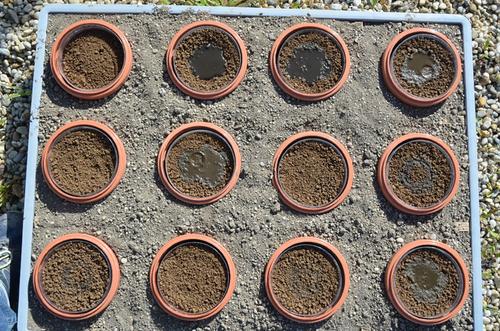Anthropogenic ammonia emissions, primarily derived from agriculture, lead to air pollution, soil acidification, and surface water eutrophication, all of which adversely affect human health and ecosystems. Slurry treatment technologies in the form of additives represent an underutilized means of reducing gaseous emissions. Information regarding the potential of additives to reduce ammonia in soil surface-applied slurries is scarce.
This study aims to develop a 15N mass balance technique to quantitatively measure ammonia losses from different slurries containing multiple additives that are applied to outdoor soil-filled containers.
The experiments were performed under free-air conditions. Isotopically labeled slurries from biogas, cattle, and pigs containing 18 additives were surface-applied to soil-filled containers and exposed for 72 or 48 h. The additives included inorganic and organic adsorbents, five amounts of sulfuric acids, molasses ± effective microorganisms, and water dilution. After termination of the ammonia loss period, a suite of soil preparation steps for the quantitative recovery of the labeled ammonium remaining in the soil was developed, and subsequently the loss of NH4-N was determined.
In the control treatments, ammonia losses from biogas, cattle slurries, and pig slurries averaged 54.4%, 33.9%, and 11.0%, respectively. The adsorbents did not decrease or only slightly decreased ammonia emissions. Ammonia abatement by sulfuric acid was nearly complete at pH values of 5.9 and 5.8 for the biogas and pig slurry, respectively, and about 80% at pH 5.2 for the cattle slurry. In comparison, more moderately decreased pH values with sulfuric acid showed a similar reduction as molasses and a 1:1 dilution for the three slurries. Adding microorganisms to the molasses did not further decrease ammonia losses.
The newly developed 15N mass balance technique, which allows a precise estimate of ammonia losses, can serve as a reference method to assess ammonia losses from field-applied slurries containing various additives and as a standard comparison technique for other ammonia measurement techniques.


